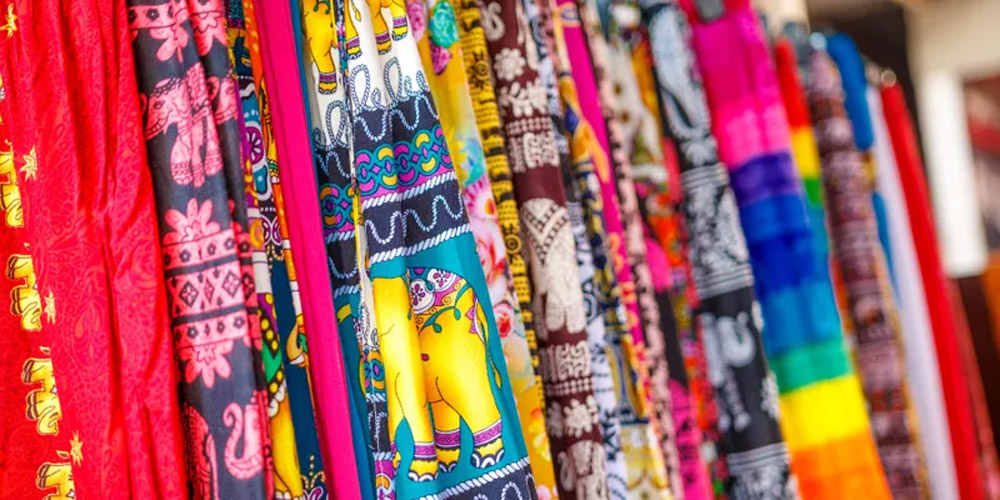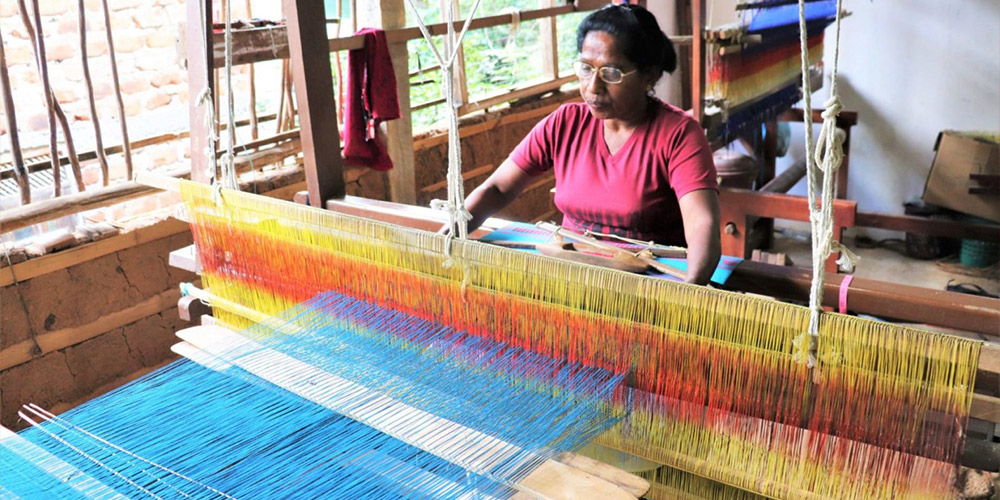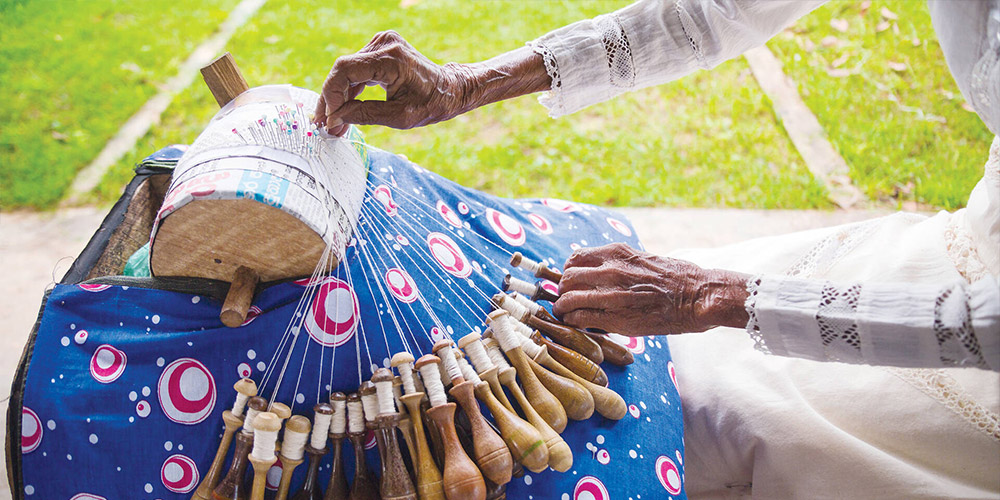The National Museum in Colombo and the National Museum in Kandy offer an excellent window to Sri Lanka’s textile traditions. Dating back many centuries, the exhibits on display of costumes, cloth, fabric, lace, embroideries etc, reflect the country’s fascinating cultural roots. Its textiles have longstanding linkages to its spiritual and ethnic diversity, as well as the longstanding foreign influences it imbibed as an important legendary spice trading post on the sea routes of the ancient world.
The items of display offer excellent insights into production technologies whose narratives are written by the olden time looms, the choice of weaving methods, the language of motifs and dying techniques, the art of ornamentation through embroideries, printing and paintings down the ages and the plentiful availability of natural resources that have fed Sri Lanka’s textile traditions.
These museum pieces include exemplars of the country’s pursuit of the preservation and collection of textiles for posterity; they also offer the visitor an opportunity to engage with Sri Lanka’s vibrant living traditions of textiles in its villages and urban spaces.
An early reference from about the 6th century BCE to the antiquity of Sri Lanka’s textile traditions is linked to folklore surrounding a princess belonging to the Yaksha community. Princess Kuweni, it appears, had supernatural powers. It is said that when the rebel Aryan Prince Vijaya was banished by his father, the Indian king Sinhabahu, he arrived in Lanka at Tammanna (Mannar) on a ship accompanied by 700 men in 543 BCE. When he first met Kuweni, she had transformed herself into a hermit and was spinning cotton.

Sri Lanka’s textile traditions are linked to its ancient Buddhist roots. According to the Mahavamsa when the hallowed Sri Mahabodhi sapling was taken in royal procession for planting in the Maha Meghavanna gardens in Anuradhapura, there were craft guilds of eighteen castes in attendance at the event; amongst these were the cloth weaving castes. They were an important part of the entourage for the ceremony as they would be involved in the making of the flags, banners, and curtains etc required for the holy event, according to the Bodhiwamsa.
The villages of Dumbara and Thalgune have deep roots in Sri Lanka’s handloom textile weaving traditions from the times of the Kandyan era. Buddhist culture is still an important influencer of weaves, design, motifs, and color in the handloom industry.
Even today there are families who are involved in supplying the unique Dambara Rata (design) mats, a painstaking skill involving the weaving of fibres of the hana agave cantala plant, for the Buddhist Temple of the Tooth. The craft has similarities to the native mat weaving traditions of Mexico, home of the agave cantala plant. In ancient times, Dambara Rata mats and tapestries were also supplied to the palace. Considered highly significant culturally, Hana tapestries and Dumbara mats today adorn homes and hotels across the country.

The hana craft, is still practiced by the Kinnara community, descendants of the indigenous people of Sri Lanka. Now this ancestral skill is only being carried out by the hana weavers in the small villages of Henaval (now called Kalasirigama) and Alokagama, in the Dumbara Valley near Kandy. It’s now being used to make purses, tote bags, table mats, screens and fans, which are lovely as souvenirs.
Lacemaking, or beeralu, as it is known locally, was first introduced in Sri Lanka by the Portuguese. Later, the Dutch played an important role in strengthening and helping keep this tradition alive in the southern coastal region of Galle. It was popular with the upper-class Sri Lankan ladies in the 16th century who embraced the beeralu technique as a hobby from the wives of the Portuguese officers; having gained this delicate skill the ladies made the long-sleeved lace-fringed blouse, known as the kaba kuruthuwa, as part of their attire. Later, of course, the skill passed into the hands of the less privileged classes.
The lacemaking in Sri Lanka also started acquiring local influences in design and motifs. In Galle you can visit the Sipnara Handicrafts Centre to see artisans at work. If you are visiting homes around Galle, you might chance upon the traditional beeralu pillow, which is quite popular still as a piece of furnishing. Sri Lankan Malays are said to have also introduced variants of crotchet work and beeralu lace weaving in Sri Lanka.
Skilled women artisans are keeping alive the craft in beeralu lace making centers in the coastal villages of Galle, Matara, Makuluwa, Gandara, Dikwella, Kottegoda; you can also check out Mirissa, Magalle and Weligama to see them at work. In Magalle check out the labours of veteran lace maker, M. B. Priyani, at Thilini Lace.

The National Council of Craft and Department of Small Industries is providing fresh impetus to this dying art by setting up beeralu lace making training centres. Modern designers too are using it as a chic addition to more contemporary formats for the fashion world.
When you are next visiting Sri Lanka, why not engage the services of a textile expert for a truly rewarding, insightful engagement with its textile heritage?


